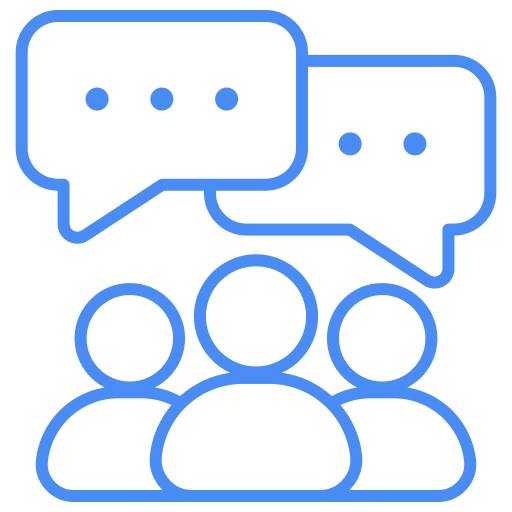A team or individual that is proficient in both the front-end and back-end components of creating web applications is said to have a full stack, which is a complete approach in the field of software development. The phrase "full stack" refers to the whole technological stack needed for web development, including the client-side (front-end) and server-side (back-end) elements. By employing tools like HTML, CSS, and JavaScript, front-end developers build the user interface and user experience that people engage with. Back-end development, on the other hand, deals with the server, databases, and application logic that power the web application.
Additional Information
What Goals Are Achieved in a Full Stack Course?
A Full Stack course aims to achieve several key goals for students or participants who undertake it:
- Full Stack courses equip individuals with the knowledge and skills to work on both the front-end and back-end of web applications. This means they can handle everything from user interface design to server-side development.
- Graduates of Full Stack courses are versatile professionals who can take on a wide range of roles in web development, including web designer, front-end developer, back-end developer, and more.
- Participants gain a holistic understanding of the entire web development process, allowing them to make informed decisions and solve problems effectively in all aspects of a project.
- Full Stack courses emphasize problem-solving and critical thinking, as developers need to troubleshoot issues, optimize performance, and integrate various technologies in real-world projects.
- Many Full Stack courses incorporate real-world projects and practical experience, helping students build a portfolio and gain hands-on experience in web development.
- Full Stack developers learn to adapt to evolving technologies and trends in the fast-paced field of web development. They are better prepared to learn and implement new tools and languages.
What Advantages Can You Afford By Earning a Full Stack Certification?
Earning a Full Stack certification can offer several advantages in your career and professional development, including:
- Full Stack developers are proficient in both front-end and back-end development, making them versatile professionals who can work on a wide range of web development projects.
- Full Stack developers are in high demand, and their skillset opens up job opportunities in various roles, including web developer, software engineer, web designer, and more.
- Certification demonstrates your commitment to continuous learning and skill improvement, making you a more competitive candidate in the job market.
- Full Stack developers often command higher salaries due to their ability to contribute to multiple aspects of a project.
- With Full Stack knowledge, you can develop your own web-based projects, startups, or freelance as a web developer, offering greater entrepreneurial prospects.
- Full Stack training equips you with problem-solving and critical thinking abilities, essential for troubleshooting and optimizing web applications.
What New Full Stack Frameworks Are There?
Full Stack frameworks were popular and widely used in the web development industry. However, it's important to note that the landscape of web development technologies is constantly evolving, and new frameworks emerge frequently. Some frameworks that were well-regarded at that time include MERN (MongoDB, Express.js, React, Node.js) and MEAN (MongoDB, Express.js, Angular, Node.js) for JavaScript-based Full Stack development, Ruby on Rails for Ruby enthusiasts, and Django for Python developers.
Additionally, there were emerging technologies like Vue.js and Nest.js, which offered Full Stack capabilities and gained popularity.
Tools and Knowledge for FUll Stack Developers:
Full Stack developers need a diverse skill set and a range of tools and knowledge to excel in their roles. Here's an overview of what's typically required:
- Proficiency in front-end languages (HTML, CSS, JavaScript) and back-end languages (Node.js, Python, Ruby, Java, etc.).
- Understanding of database systems (e.g., MySQL, PostgreSQL, MongoDB) and knowledge of database design and optimization.
- Familiarity with server-side technologies and cloud platforms (e.g., Express.js, Django, AWS, Azure).
- Competence in version control systems, such as Git, for code management and collaboration.
- Ability to create and consume APIs (RESTful and GraphQL) for data exchange between front-end and back-end.
- Knowledge of JavaScript frameworks (e.g., React, Angular, Vue.js) for building user interfaces.
- Understanding of web design principles, UI/UX design, and responsive design techniques.
Full Stack Future Prospects and Techniques
You will find it simple to land a job with prestigious firms like IBM, HCL, Cognizant, CTS, Dell, TCS, Accenture, etc., thanks to ACTE. After completing the training program, you'll get a work promptly with a competitive salary because our credentials are accepted all around the world. You will gain the following benefits from our certification:
- While Full Stack expertise is valuable, consider specializing in certain areas such as front-end development, back-end development, DevOps, or specific technologies like machine learning, blockchain, or cloud computing.
- Learn about microservices architecture and serverless computing, which are gaining popularity for building scalable and efficient applications.
- Familiarize yourself with artificial intelligence (AI) and machine learning to integrate intelligent features into web applications.
- Explore the development of PWAs to provide a native app-like experience on the web, enhancing user engagement.
- Consider JAMstack architecture (JavaScript, APIs, and Markup) for building faster, secure, and scalable web applications.
- Stay informed about low-code/no-code platforms that can streamline development processes and reduce the need for extensive coding.


.png)
.png)
.png)
.png)

.png)
.png)
.png)
.png)
.png)

























